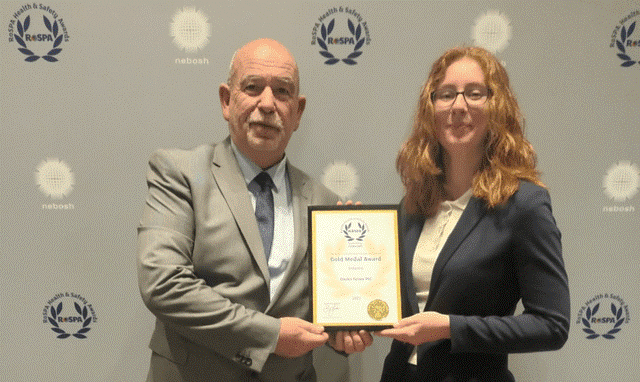COVID-19 is proving a catalyst for change in the energy sector, accelerating environmental initiatives. Citi explores how banks have an important role to play in supporting clients
Environmental considerations are not new in the energy industry. However, we are now at a tipping point, with the industry increasing funding in, or launching, business models which could transform the energy sector.
In Citi’s view, there is no going back: with respect to wrapping environmental initiatives tightly into the business, the “new normal” has arrived. Banks can support clients as they explore new tools to maintain healthy financials, while investing to meet environmental objectives.
Christine McWilliams Global Head Commodity and Energy Trade, Treasury and Trade Solutions, Courtney Lowrence Managing Director, Sustainable Banking and Corporate Transitions, Peter Langshaw Global Energy Sector Sales Head, Treasury and Trade Solutions, Citi discuss the unique opportunity for change in the energy sector.
The COVID-19 pandemic and resulting demand destruction, along with the unusual changes in crude prices through 2020, triggered an acute economic shock across the energy sector as it has for many other industries. These events have enabled strategic, company specific, approaches to environmental initiatives.
Environmental considerations are not new in the energy industry, but often were not given investment priority. However, 2020 looks to be a tipping point, with the industry encouraged by its stakeholders to increase funding in, or launch, business models which have the potential to transform the energy sector. In Citi’s view, there is no going back: with respect to wrapping environmental initiatives tightly into the business, the “new normal” has arrived.
A catalyst for change
For its part, the energy sector is accustomed to various shocks with rebounds to business as usual. However, the current crisis caused by the pandemic seems to hallmark a different outcome. Lockdowns and the slow easing or recurrence of restrictions has created gaps in demand across sectors that use energy products, challenging companies throughout the energy value chain to examine their business models and financing. It has been a unique opportunity to undergo a strategic renovation for the energy industry and reprioritise many initiatives which support environmental objectives.
A turning point
For the entire energy value chain, there is an opportunity to infuse new vigour into environmental strategies and renewable energy businesses in response to stakeholders’ expectations. It is the ideal environment to build on existing strategies and to provide private sector leadership at a time when many governments around the world may need to make difficult choices between pandemic recovery spending and capital intensive renewable or retrofit projects.
Most of the supermajors and many independents are increasing investment in environmental projects and renewable energy such as offshore wind, solar projects and zero-emission vehicle fuels. Investing in lower carbon technology and carbon capture, utilisation and sequestration technologies (CCUS) including mobility options such as hydrogen, setting net-zero carbon emission targets and publishing sustainability initiative reports is common. And using joint ventures to advance strategies is also prevalent, such as six of the world’s largest energy companies forming the Northern Endurance Partnership (NEP) to develop offshore infrastructure, part of a larger goal around carbon capture, fuel switching and hydrogen.
These projects highlight a challenging transition period between investment and return. Renewable energy projects are often valued on expected future earnings, whilst more traditional energy is valued on its ability to pay dividends in the near-term. Having the balance sheet strength to be patient while consumer demand develops as well as the ability to invest in infrastructure and in the expansion of renewable projects, is key.
More importantly, the industry can leverage its balance sheets to invest in economies of scale to get markets to change more rapidly. Investing in projects and infrastructure could also yield wider availability, another component in consumer appeal. Appropriate use of a robust balance sheet could enable energy companies to accelerate the journey towards a lower carbon world. Some of the largest NOCs (National Oil Companies) are also using their balance sheets to scale-up projects. Among the boldest projects is NEOM city in Saudi Arabia where the government, investment in diversification and the balance sheets of local companies, including the NOC, are responsible for the financial commitments being made. NEOM city aims to have the first at scale fully renewable energy system, including green hydrogen.
Indeed, many NOCs, both large and small, are taking positive steps towards a sustainable future by building structural resilience and increasing investments in energy efficiency and renewable projects.
Even smaller NOCs and emerging economies are under pressure to balance monetising national hydrocarbons whilst responding to societal pressures to invest in environmentally friendly projects. This is a challenge when large percentages of cash flows come from more traditional energy.
Across all sectors of the industry, innovation and digitisation will play a key role in capturing the benefits across the value chain and to support newly evolving business models. Yet in a post-COVID world, paradigms are being revisited to ensure new forms of energy are considered as part of the future energy mix.
Again the challenge is how best to maintain current cash flows which may be the result of more traditional energy while responding to the need to invest in environmental strategies.
The new banking landscape
Banks have an important role to play collaborating with clients under the continued pressure to meet current financial targets whilst making critical investments which often have a longer financial benefit horizon.
At Citi, we are seeing an increased use of traditional trade solutions such as bills of exchange as well as renewed interest in supply chain financing and portfolio-driven accounts receivable structures — solutions used in other industries to support the working capital cycle but not as readily seen in energy. These solutions can serve a dual purpose of supporting financial objectives while encouraging environmental initiatives. Citi’s solutions in green bonds, ESG linked loans, ESG deposit solutions, and green project funding can enable funding while supporting ESG goals. Our digital treasury and trade solutions are often a “triple crown” of enhancing business continuity, supporting plans for a reduced business footprint, and enabling companies to access the financing they need efficiently and with greater visibility and risk control.
Citi is a global organisation in advising, financing and catalysing sustainable business models and driving the transition to a net-zero emissions global economy. In fact, We have our own goals around advancing solutions which address climate change and have set 2025 goals around low-carbon transition and climate risk.
Citi has seen an increase in the number of firms exploring financing that supports a green initiative or is specifically aimed at encouraging more environmentally friendly activities. Banks can be key agents for change as interest in these financing tools takes hold. Indeed, the market for green financing is gaining strength — with global green bond and loan issuance reaching US$257.7bn in 2019 — and corporations of all types are adapting their investment and growth decisions in order to qualify for this new type of financing.
Commentary: George Britton, Product Specialist, GoCardless
In the utility space, identifying and managing financially vulnerable customers is a challenge. When customers fall into financial difficulty, they risk facing failed payment charges, which can make their situation worse, while energy suppliers may accrue bad debt and expend significant time dealing with these cases.
Imagine a world where suppliers are able to identify their most vulnerable customers in real time, ensuring those customers never have to incur failed payment charges; where energy suppliers can get in touch proactively with customers as and when issues arise, rather than when the customer falls behind on their third monthly payment. This is a future that can be created through open banking.
Obtaining customer account information, through an AISP, could help energy companies identify and manage vulnerable customers. Put simply, you will know if a payment is going to fail before you initiate it, enabling you to prevent failed payments and unnecessary customer charges, and reduce related support time.
To stay up to date on the latest, trends, innovations, people news and company updates within the global trade and logistics market please register to receive our newsletter here.
Media contact
Rebecca Morpeth Spayne,
Editor, International Trade Magazine
Tel: +44 (0) 1622 823 922
Email: editor@intrademagazine.com





